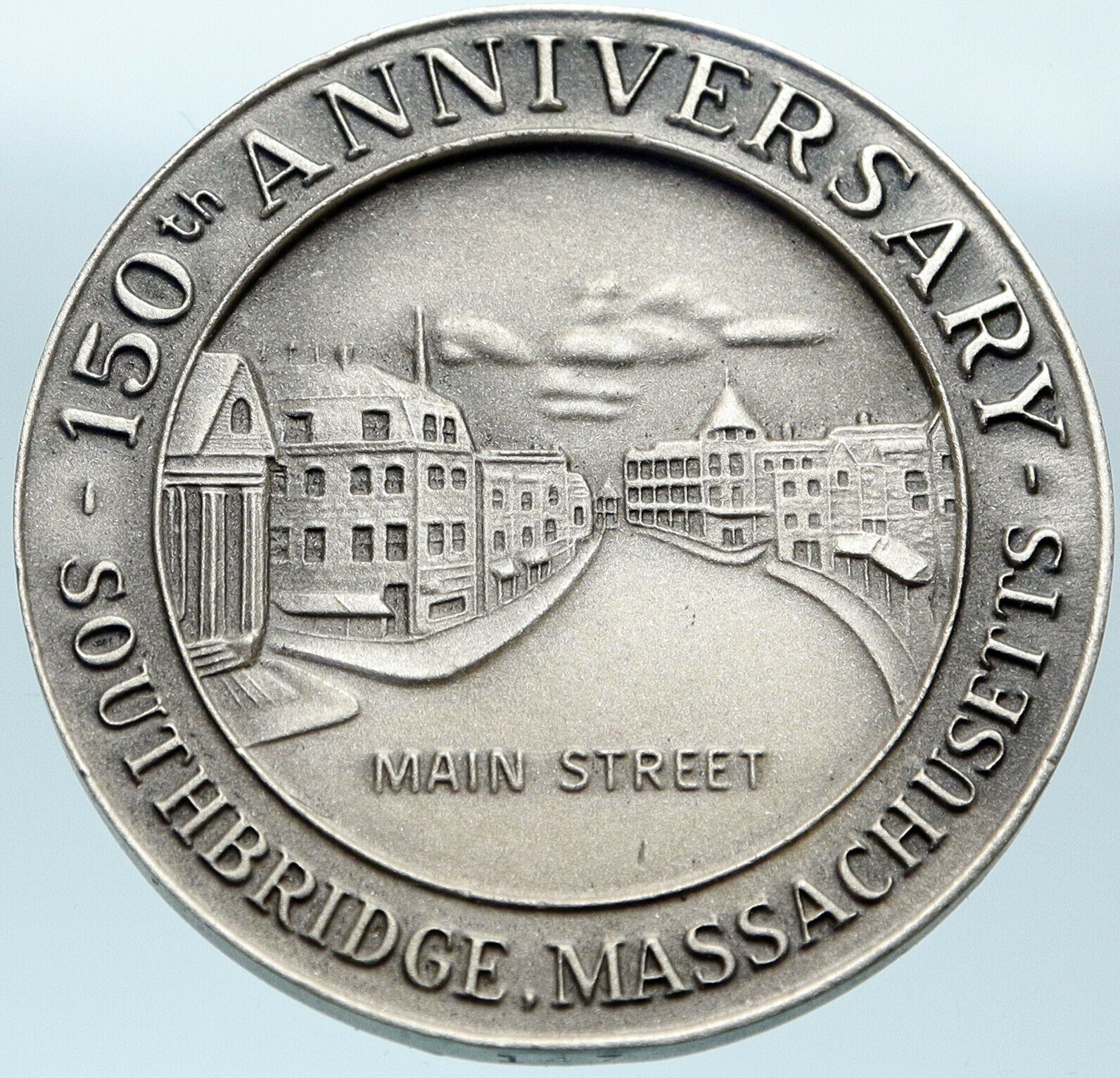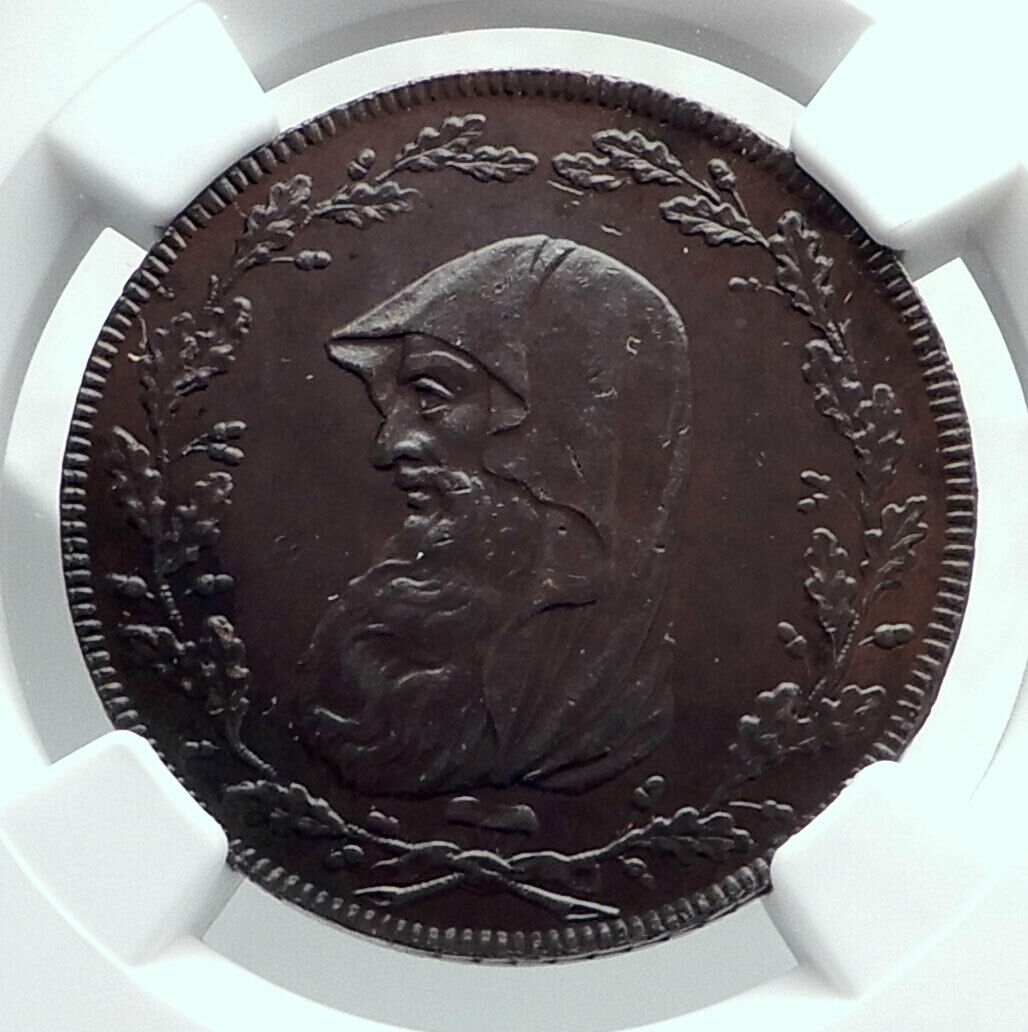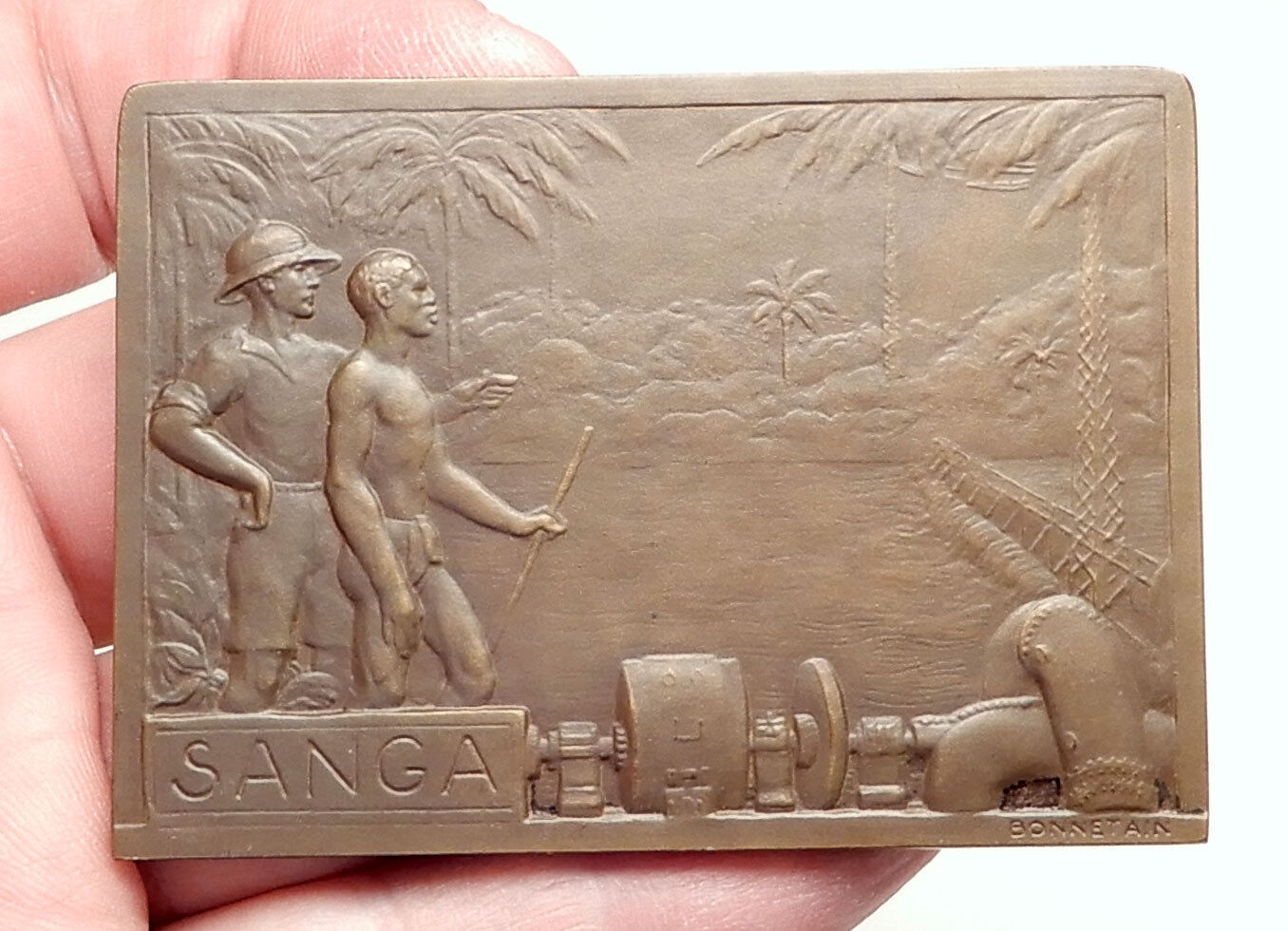|
Switzerland – Completion of the Bern Cathedral Tower
1893 Silver Specimen Medal 37mm
Reference: SM# 601
Certification: PCGS SP61 716707.61/37075538
Das Brener Munfter in seiner Bollendung 25 November 1893 Ehre sei Gott in der hohel HOMBERG BERN, Bern Minster Cathedral facade.
Der Munfterthurm begonnen am II. Mairz 1421 durch Mathaus Ensinger Marh’s na, Cathedral before tower had been added.
You are bidding on the exact item pictured, provided with a Certificate of Authenticity and Lifetime Guarantee of Authenticity.
 Bern Minster (German: Berner Münster) is a Swiss Reformed cathedral, (or minster) in the old city of Bern, Switzerland. Built in the Gothic style, its construction started in 1421. Its tower, with a height of 100.6 m (330 ft), was only completed in 1893. It is the tallest cathedral in Switzerland and is a Cultural Property of National Significance. Bern Minster (German: Berner Münster) is a Swiss Reformed cathedral, (or minster) in the old city of Bern, Switzerland. Built in the Gothic style, its construction started in 1421. Its tower, with a height of 100.6 m (330 ft), was only completed in 1893. It is the tallest cathedral in Switzerland and is a Cultural Property of National Significance.
 The Minster of Bern is located on the southern side of the Aare peninsula. The cathedral is oriented east and west like the rest of the Old City of Bern. To the north, Münstergasse runs along the side of the building. The west façade of the Münster dominates Münsterplatz. On the south side of the cathedral is the Münsterplattform. The Minster of Bern is located on the southern side of the Aare peninsula. The cathedral is oriented east and west like the rest of the Old City of Bern. To the north, Münstergasse runs along the side of the building. The west façade of the Münster dominates Münsterplatz. On the south side of the cathedral is the Münsterplattform.
It is a three nave basilica without a transept. The entire cathedral is 84.2 meters (276 ft) long and 33.68 m (110.5 ft) wide. The central nave is 39.37 m (129.2 ft) long by 11.10 m (36.4 ft) wide and is 20.70 m (67.9 ft) high. The two side naves are very similar in dimensions, the north nave is 52.50 m (172.2 ft) long, while the southern one is slightly longer at 52.72 m (173.0 ft). They are both 6.45 m (21.2 ft) wide and 10.40 m (34.1 ft) high. The altar house and choir together are 25.20 m (82.7 ft) long, 10.92 m (35.8 ft) wide and 19.40 m (63.6 ft) high. The cathedral has a single tower in the west, which is 100.60 m (330.1 ft) high. Below the tower, there is a 10.15 m (33.3 ft) long by 10.46 m (34.3 ft) wide, tower hall.
There are a total of ten bays in the building. The central nave has five of these bays. Each of the side naves has two bays, with side chapels built against the exterior walls. The last bay is within the choir.
The central nave walls are supported by fourteen flying buttresses. Each buttress starts at a decorated column which rises above the roof of the side naves and side chapels. The buttresses rise at an angle of 43° 30’. The lower side of the buttresses are decorated with egg-shaped cut outs, with vesica piscis and spandrel designs.
The majority of the building is built from local sandstone. The vaults are built of brick. In the 18th Century, limestone sheathing was added to the pillars. Most of the sandstone came from a quarry at Ostermundingen. Additional material came from three other quarries, each with differing color and quality. The various stone types were used more or less randomly throughout the entire building. The pillar bases, capitals, windows and sculptures are all from the highest quality, blue sandstone from the Gurten quarry, south of Bern. During reconstruction projects in the 19th and 20th Centuries, several other sandstone types were used.
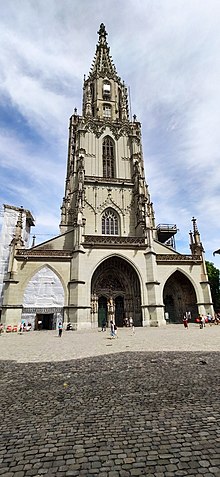 The first church on this site probably was a small chapel built during the founding of Bern (1191). The first church of Bern was a romanesque building which was probably built between 1155–1160, but is first mentioned in 1224. This church was outside the city walls, near what is now Kreuzgasse. The nave of the first church was about 16.5 m (54 ft) long by 6 m (20 ft) wide. The first church on this site probably was a small chapel built during the founding of Bern (1191). The first church of Bern was a romanesque building which was probably built between 1155–1160, but is first mentioned in 1224. This church was outside the city walls, near what is now Kreuzgasse. The nave of the first church was about 16.5 m (54 ft) long by 6 m (20 ft) wide.
In 1276, Bern broke away from the parish of Köniz to become an independent parish. For this new role, a larger church would have been necessary. It appears likely that construction on the second church began immediately. However, it isn’t mentioned until 1289 in writings of Bishop Benvenutus von Eugubio. This new church was a three nave building, with a length of 29.5 m (97 ft), a width of 24.5 m (80 ft) of which the middle nave was 11.1 m (36 ft) wide. The bell tower was located in the middle of the northern side nave, and filled part of the central nave.
The 1356 Basel earthquake caused extensive damage to the church walls, arches, and tower. Repairs proceeded slowly. The choir was rebuilt in 1359 and the roof was rebuilt in 1378–80. During the early stages of construction of the Minster, this church was still being used. The nave was finally demolished between 1449–51 and the tower remained until 1493.
By the 15th Century, Bern had expanded and become a major city-state north of the Alps. To celebrate their growing power and wealth, plans were made to build a new and larger church. On 11 March 1421 construction began on the cathedral under the direction of the Strasbourg master builder Matthäus Ensinger who had already built three other cathedrals. During construction, services were held in the old chapel while the new cathedral was built up around it. During the 1440s the unvaulted choir was used for services after a simple roof was built and stained glass windows were installed. After the Old Zürich War 1440–1446 the nave of the old chapel was removed and work began on the nave and west end, under the chief masons Stefan Hurder and then Niklaus Birenvogt.
In 1483 Erhart Küng (who carved the statues of the Last Judgement) became the master mason. Under his direction the nave walls were raised and the tower was built to the lower octagon. Construction on the lower rectangular tower began in 1481 or 1483 and continued until 1489. The upper rectangular section was built between 1489 and 1518. Following Küng’s death in 1506, Peter Pfister lead the construction and finished the vaulting in the choir. The lower octagonal tower and roof were finished between 1518 and 1521. In 1571 Daniel Heintz was brought in as master mason to finish vaulting the nave and finish the work. The central nave was finished by 1575 and at this point, construction stopped for almost three centuries. The organ was installed in three stages between 1727 and 1783. The bell tower, with the largest bell in Switzerland, wasn’t completed until 1893.
.svg/85px-Coat_of_Arms_of_Switzerland_(Pantone).svg.png) 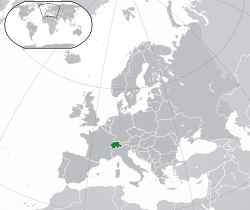 Switzerland, officially the Swiss Confederation (Latin: Confoederatio Helvetica, hence its abbreviation CH), is a federal parliamentary republic consisting of 26 cantons, with Bern as the seat of the federal authorities, the so-called Bundesstadt (“federal city”). The country is situated in Western and Central Europe, where it is bordered by Italy to the south, France to the west, Germany to the north, and Austria and Liechtenstein to the east. Switzerland is a landlocked country geographically divided between the Alps, the Swiss Plateau and the Jura, spanning an area of 41,285 km2 (15,940 sq mi). While the Alps occupy the greater part of the territory, the Swiss population of approximately 8 million people is concentrated mostly on the Plateau, where the largest cities are to be found. Among them are the two global cities and economic centres of Zürich and Geneva. Switzerland, officially the Swiss Confederation (Latin: Confoederatio Helvetica, hence its abbreviation CH), is a federal parliamentary republic consisting of 26 cantons, with Bern as the seat of the federal authorities, the so-called Bundesstadt (“federal city”). The country is situated in Western and Central Europe, where it is bordered by Italy to the south, France to the west, Germany to the north, and Austria and Liechtenstein to the east. Switzerland is a landlocked country geographically divided between the Alps, the Swiss Plateau and the Jura, spanning an area of 41,285 km2 (15,940 sq mi). While the Alps occupy the greater part of the territory, the Swiss population of approximately 8 million people is concentrated mostly on the Plateau, where the largest cities are to be found. Among them are the two global cities and economic centres of Zürich and Geneva.
The establishment of the Swiss Confederation is traditionally dated to 1 August 1291, which is celebrated annually as Swiss National Day. It has a long history of armed neutrality-it has not been in a state of war internationally since 1815-and did not join the United Nations until 2002. It pursues, however, an active foreign policy and is frequently involved in peace-building processes around the world. Switzerland is also the birthplace of the Red Cross and home to numerous international organizations, including the second largest UN office. On the European level, it is a founding member of the European Free Trade Association and is part of the Schengen Area – although it is notably not a member of the European Union, nor the European Economic Area. Switzerland comprises four main linguistic and cultural regions: German, French, Italian and the Romansh-speaking valleys. Therefore, the Swiss, although predominantly German-speaking, do not form a nation in the sense of a common ethnic or linguistic identity; rather, the strong sense of identity and community is founded on a common historical background, shared values such as federalism and direct democracy, and Alpine symbolism.
Switzerland has the highest nominal wealth per adult (financial and non-financial assets) in the world according to Credit Suisse and eighth-highest per capita gross domestic product on the IMF list. However, Switzerland is also the most expensive country in the world to live in, as measured by the price level index.
Swiss citizens have the second-highest life expectancy in the world on the UN DESA list. Switzerland is tied with the Netherlands for the top rank on the Bribe Payers Index indicating very low levels of business corruption. Moreover, for the last five years the country has been ranked first in economic and tourist competitiveness according to the Global Competitiveness Report and the Travel and Tourism Competitiveness Report respectively, both developed by the World Economic Forum. Zürich and Geneva have each been ranked among the top cities with the highest quality of life in the world, with the former coming second globally according to Mercer. However, Mercer also rates those two cities as the fifth- and sixth- most expensive cities in the world to live in.
|








 Bern Minster (German: Berner Münster) is a Swiss Reformed cathedral, (or minster) in the old city of Bern, Switzerland. Built in the Gothic style, its construction started in 1421. Its tower, with a height of 100.6 m (330 ft), was only completed in 1893. It is the tallest cathedral in Switzerland and is a Cultural Property of National Significance.
Bern Minster (German: Berner Münster) is a Swiss Reformed cathedral, (or minster) in the old city of Bern, Switzerland. Built in the Gothic style, its construction started in 1421. Its tower, with a height of 100.6 m (330 ft), was only completed in 1893. It is the tallest cathedral in Switzerland and is a Cultural Property of National Significance. The Minster of Bern is located on the southern side of the Aare peninsula. The cathedral is oriented east and west like the rest of the Old City of Bern. To the north, Münstergasse runs along the side of the building. The west façade of the Münster dominates Münsterplatz. On the south side of the cathedral is the Münsterplattform.
The Minster of Bern is located on the southern side of the Aare peninsula. The cathedral is oriented east and west like the rest of the Old City of Bern. To the north, Münstergasse runs along the side of the building. The west façade of the Münster dominates Münsterplatz. On the south side of the cathedral is the Münsterplattform. The first church on this site probably was a small chapel built during the founding of Bern (1191). The first church of Bern was a romanesque building which was probably built between 1155–1160, but is first mentioned in 1224. This church was outside the city walls, near what is now Kreuzgasse. The nave of the first church was about 16.5 m (54 ft) long by 6 m (20 ft) wide.
The first church on this site probably was a small chapel built during the founding of Bern (1191). The first church of Bern was a romanesque building which was probably built between 1155–1160, but is first mentioned in 1224. This church was outside the city walls, near what is now Kreuzgasse. The nave of the first church was about 16.5 m (54 ft) long by 6 m (20 ft) wide. .svg/85px-Coat_of_Arms_of_Switzerland_(Pantone).svg.png)
 Switzerland, officially the Swiss Confederation (Latin: Confoederatio Helvetica, hence its abbreviation CH), is a federal parliamentary republic consisting of 26 cantons, with Bern as the seat of the federal authorities, the so-called Bundesstadt (“federal city”). The country is situated in Western and Central Europe, where it is bordered by Italy to the south, France to the west, Germany to the north, and Austria and Liechtenstein to the east. Switzerland is a landlocked country geographically divided between the Alps, the Swiss Plateau and the Jura, spanning an area of 41,285 km2 (15,940 sq mi). While the Alps occupy the greater part of the territory, the Swiss population of approximately 8 million people is concentrated mostly on the Plateau, where the largest cities are to be found. Among them are the two global cities and economic centres of Zürich and Geneva.
Switzerland, officially the Swiss Confederation (Latin: Confoederatio Helvetica, hence its abbreviation CH), is a federal parliamentary republic consisting of 26 cantons, with Bern as the seat of the federal authorities, the so-called Bundesstadt (“federal city”). The country is situated in Western and Central Europe, where it is bordered by Italy to the south, France to the west, Germany to the north, and Austria and Liechtenstein to the east. Switzerland is a landlocked country geographically divided between the Alps, the Swiss Plateau and the Jura, spanning an area of 41,285 km2 (15,940 sq mi). While the Alps occupy the greater part of the territory, the Swiss population of approximately 8 million people is concentrated mostly on the Plateau, where the largest cities are to be found. Among them are the two global cities and economic centres of Zürich and Geneva.

